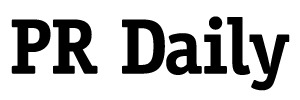Building transparency and trust from news media to PR
Sally Lehrman, founder of The Trust Project, shares how misinformation and disinformation can take root.

It all started with clickbait. Sally Lehrman, then an endowed chair at Santa Clara University in California, gathered a group of journalists together in 2012 and in 2014 to discuss how news organizations were adapting to the digital space.
That conversation, on the heels of the 2012 creation of BuzzFeed News and during a time of rapidly changing search and social media algorithms, revealed some common complaints: the demand for clicks was undermining the standards and integrity of news ethics and quality.
“It set me off on this mission to try to understand why people lose trust in journalism,” said Lehrman. “How do they decide whether to trust an article or news story?” These questions led Lehrman to found the Trust Project in late 2014, hoping to strengthen the public’s confidence in the news through accountability and transparency standards.
Ahead of her session at PR Daily’s Media Relations Conference, we caught up with Lehrman to discuss how, nine years later, the Trust Project combats misinformation and disinformation, how social media algorithms continue to evolve, and how the organization plans to look beyond news media to build back the public’s trust.
Misinformation, disinformation and deliberate disinformation.
It’s no secret that false information and deliberate falsehoods are rampant across social media.
“This transition has been occurring for some time now,” said Lehrman. Many people rely on information shared innocently by friends on social media as a source of news, even though this often leads to the circulation of misinformation rather than getting information from credible news sources.
“When everything looks the same, why should you trust a piece of deeply reported journalism?” asked Lehrman.
No matter the source of your news, before it arrives to you, it’s fed through technology platforms and algorithms. “It’s created a free-for-all for information [designed] to manipulate the algorithms to reach their intended audiences,” Lehrman said.
Disinformation is the deliberate spread of false or misleading information with the intent to deceive or manipulate others. Most troubling is when it’s being shared intentionally. “[It gets] taken up and used by people with an agenda,” said Lehrman. “[It’s] intended to deliberately divide and separate and polarize.”
Lehrman believes that sometimes misinformation and disinformation take root because journalism doesn’t always address what people want to see.
What makes an article or a website trustworthy?
Through extensive interviews with users, then workshops with senior news executives in the Trust Project consortium curated a comprehensive list of indicators to identify trustworthy news. These indicators were then reviewed by collaborators from 20 news organizations who selected a prioritized set of eight Trust Indicators, known as the trust protocol. Following this, numerous senior executives collaborated to establish editorial definitions and develop a global industry standard for transparency.
“[These Indicators] all emerged out of user-centered design research about what people value in the news, and how they make decisions to trust it, “said Lehrman.
With all that work they settled on a series of disclosures that show who and what is behind a news story. “People are going to care more about certain ones than others,” Lehrman added. “And that’s the point.”
Lehrman said the eight Trust Indicators focus on things like: Who owns it; who funds it; who are the individual journalists; who’s on the masthead; what kind of ethics do they have; what are their preferences; different parts of ethics such as when they decide to make a correction, or how do they handle complaints; and policies around inclusion and diversity.
[FREE GUIDE: Pitching the Media]
“[The answers to all of these] help the public know who and what is behind the news site,” the founder said.
Hundreds of news sites around the world now use these Trust Indicators on their pages. “Despite ongoing misinformation and disinformation, individuals and companies can do a lot to address the problem,” Lehrman said. “They do have agency.”
What’s next for the Trust Project?
“[As journalists, our role is to keep pushing out accurate information,” said Lehrman. But she believes that the mission of the Trust Project can expand to other sectors, such as public relations or even healthcare. “We need to grow,” Lehrman said. “I know we’re having an impact.”
The future for the news landscape feels uncertain, particularly with the ongoing advancements of AI, better and more deep fakes, and fewer journalists employed at news desks. “Our biggest challenge is how do we continue to bring on news organizations [to use the indicators],” said Lehrman, “but we feel that other fields can benefit as well.”
There’s room for the Trust Indicators to be adapted and used in various fields, contributing to building trust and combating misinformation in different sectors. One of those fields is public relations, said Lehrman.
“We’re also working on a project with Howard University on translating or transferring our Trust Indicators into the public health communications environment,” said Lehrman. This could help to promote transparency, accountability and credibility in disseminating information related to public health issues.
“We all can play a part just by sharing the Trust Indicators and explaining what they mean,” said Lehrman.
Join Lehrman at PR Daily’s Media Relations Conference on June 5-6. She will speak alongside communications leaders from APCO Worldwide, Edelman, Mars Inc., National Association of Government Communicators, National Public Radio, Raytheon Missiles & Defense, Southwest Airlines and many more.
Isis Simpson-Mersha is a conference producer/ reporter for Ragan. Follow her on LinkedIn.
COMMENT
PR Daily News Feed
RECOMMENDED READING
Tags: social media







